This post will focus on the following topics.
- The Skills Gap: Why It Matters for Growing Businesses
- 1. Proactive Workforce Planning
- 2. Develop a Flexible Hiring Strategy
- 3. Upskill and Cross-Skill from Within
- 4. Tap Into Community Partnerships
- 5. Create a Culture That Retains Talent
No matter your industry, chances are that finding the right talent has become a top challenge in the last few years. From tech startups to logistics firms to creative agencies, small and mid-sized businesses everywhere are grappling with skills shortages, high turnover, and fierce competition for specialized expertise.
In this rapidly shifting hiring landscape, business leaders need creative approaches and time-tested tools to secure, develop, and retain the people that drive growth.
This comprehensive guide explores actionable strategies any business owner or manager can use to navigate the changing world of talent including workforce planning, flexible hiring, upskilling, and community partnerships.
The Skills Gap: Why It Matters for Growing Businesses
A skills shortage doesn’t just mean empty seats it slows innovation, stretches your remaining team, and can even cause you to lose clients or delay projects. In sectors ranging from IT and healthcare to service industries and construction, new technologies and evolving client needs have widened the gap between available talent and business requirements.
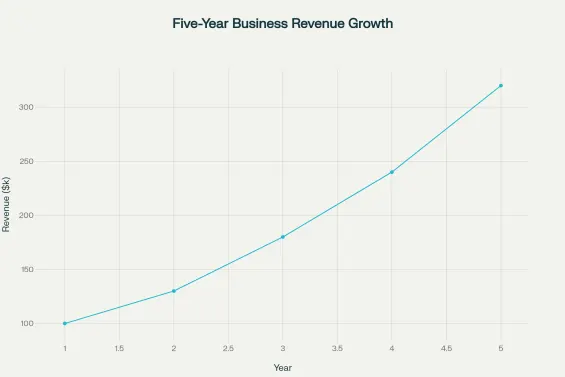
Common consequences of an unaddressed skills gap:
- Reduced productivity and increased overtime for current employees.
- Higher training costs and loss of institutional knowledge.
- Project delays, missed opportunities, and stunted growth.
- Declining morale or burnout among staff asked to “do more with less.”
1. Proactive Workforce Planning
Smart companies start with a plan. Forecast talent needs not just for today, but for next quarter and next year. Which positions are hardest to fill? Where are you vulnerable if one or two employees leave? Build a simple skills inventory what does your team do today, and what will you need for the business you want to win tomorrow?
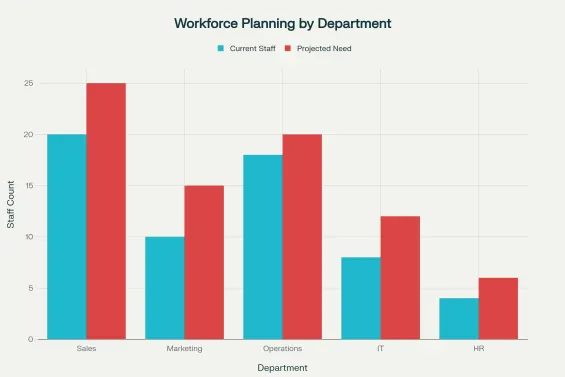
Break large challenges into manageable goals, such as:
- Building in-house expertise in a specific tech or regulatory area.
- Creating backup plans for high-turnover or mission-critical roles.
- Identifying future leaders and helping them upskill steadily.
2. Develop a Flexible Hiring Strategy
A major shift in recent years: flexibility can make or break your access to talent. Offering part-time, project-based, remote, or temp-to-hire roles opens your organization to a much wider pool of candidates including those not seeking traditional, full-time jobs. Many high-potential candidates value the ability to test company culture or build new skills through flexible roles before committing long-term.
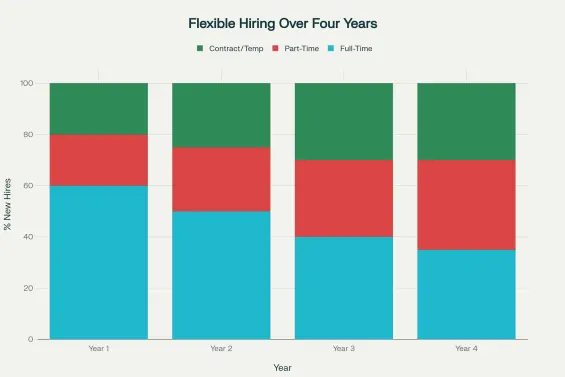
Actionable Tips:
- Regularly review which roles require full-time, permanent staff, and which can be handled on a temporary or contract basis.
- Make remote/hybrid options clear in your job postings when possible.
- Tap into diverse networks: consider retirees, students, or professionals returning after a career break for specialized or limited-duration work.
3. Upskill and Cross-Skill from Within
Training isn’t just for new hires your most loyal employees can grow into new roles with the right investment. Upskilling (deepening a current employee’s expertise) and cross-skilling (teaching employees new adjacent skills) reduce reliance on outside hires and boost morale. Online learning platforms, workshops, and even structured job rotations offer affordable paths to new competencies.
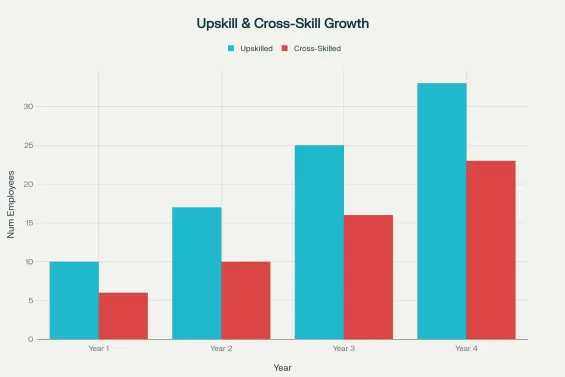
How to get started:
- Survey staff to discover interests and hidden skills.
- Offer monthly “lunch & learns” or sponsor access to industry-recognized courses.
- Reward employees who earn new certifications or expand their abilities, even if it isn’t strictly related to their present job.
4. Tap Into Community Partnerships
Strong local networks can help bridge the skills gap. Partner with community organizations, universities, and trade schools to design internships, apprenticeships, or “returnship” programs. These help cultivate a pipeline of future employees who are eager to learn and already invested in your business’s success.
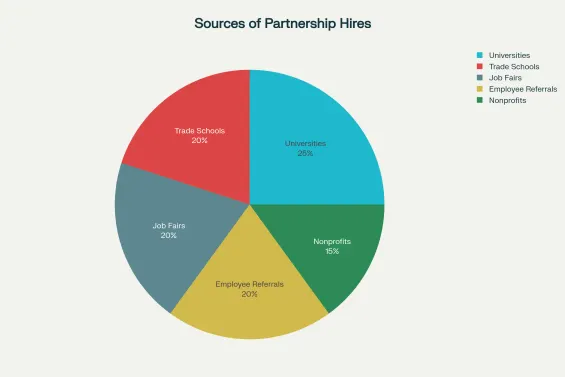
Examples:
- Host job shadowing days or career fairs with local schools.
- Set up mentorship pairings between seasoned employees and newcomers.
- Offer real-world project experience for university students; you might discover your next great hire.
5. Create a Culture That Retains Talent
Competing for talent gets easier when you’re seen as a top place to work. Transparent communication, opportunities for advancement, and real attention to work-life balance drive retention. Focus on:
- Clear career paths and promotion opportunities.
- Flexible work schedules and remote work where possible.
- Employee recognition programs and regular feedback loops.
- Real support for diversity, equity, and inclusion so all voices are welcomed.
Survey departing staff and new hires to spot any gaps or areas for improvement. Sometimes, simple tweaks to communication or onboarding can make a big difference.
6. Leverage Modern Recruiting Tools
Applicant tracking systems, skills assessments, video interviews, and digital referral programs streamline the hiring process and help you reach candidates you might have missed otherwise. Make sure your careers page is mobile-friendly, vivid, and up to date with your latest needs.
Be open to experimenting with new outreach channels from niche job boards to gig economy platforms to targeted social media campaigns.
7. Measure, Refine, and Adjust
Effective talent strategies evolve over time. Track:
- Time-to-fill and cost-to-fill for critical roles
- Turnover rates, especially in skilled positions
- Success rate of internal promotions or cross-skill initiatives
Analyze what works and what doesn’t, and don’t be afraid to try new approaches be it a new training app, an experimental partnership, or even a “talent task force” to brainstorm new solutions each quarter.
Embrace Diversity to Widen Your Talent Pool
A diverse workforce isn’t just good for optics it’s a strategic advantage. Bringing together people with different backgrounds, skills, and perspectives can spark innovation and open new approaches to problem-solving. To fill skills gaps, broaden your recruiting sources by actively seeking candidates from underrepresented groups, different industries, and a mix of educational backgrounds.
Diversity and inclusion training, unbiased job descriptions, and fair interviewing practices can help eliminate obstacles and unleash new ideas within your organization.
Building relationships with diversity-focused job boards, professional groups, and community organizations can further expand your reach. Businesses that prioritize inclusion not only fill roles faster but also benefit from greater creativity, employee engagement, and a positive reputation in the market.
Adapt Quickly to Market Changes
Successful organizations are agile ready to shift plans and embrace new opportunities as the market evolves. Rather than sticking rigidly to old hiring models or job requirements, review your workforce strategies regularly. Encourage a learning mindset within your teams and reward those who champion change or suggest process improvements.
Keep an eye on trends in technology, regulation, and industry best practices, so your talent development keeps pace.
Consider running quarterly strategy sessions with your HR, leadership, and department heads to reassess key roles, critical skill sets, and upcoming business needs. An agile approach means you’ll not only survive market changes you’ll have the people in place to capitalize on them quickly.
Conclusion: The Future of Work Is Creative and Collaborative
Overcoming recruitment and retention challenges is possible for businesses willing to adapt. With proactive planning, a flexible mindset, internal development, and community partnerships, companies can not only fill today’s gaps but build a resilient workforce for tomorrow.
The most successful employers in 2025 and beyond will be those who understand: people aren’t just a resource they’re your most important asset. Invest in them early and often, and you’ll be ready for whatever the next shift in the market brings.
Read Next
The following articles are related to how to improve business efficiency and team performance.









